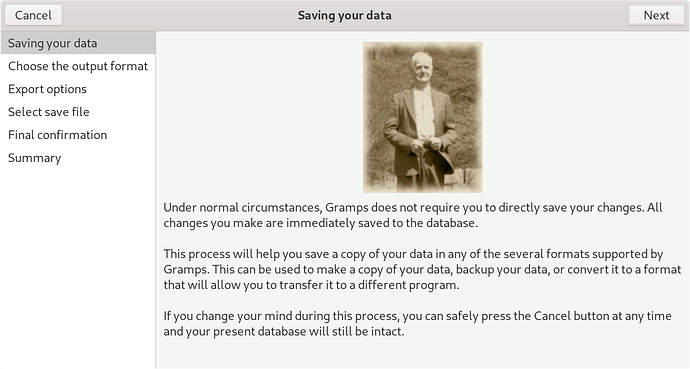Gramps version: 5.2.2 Linux Mint LMDE 6 Over the last two years, I have probably made about 30 unsuccessful attempts to implement the suggestion to simplify the media paths. I have made every effort to follow the relevant instructions, but in each case all the images have become invisible. I would ask you to provide clear instructions. It shouldn’t be that difficult. I will describe my actions below:
- importing a file “tree.dpkg”.
- move media folder from “/home/rainer/tree.gpkg.media/home/rainer/Ahnentafel” to “/home/rainer/Ahnentafel”
- Open Tools >Service programs >Media management (german: Werkzeuge >Dienstprogramme >Medienverwaltung
- Select (first item) “Replace substring in the path” (german: Ersetze Teilzeichenfolge in dem Pfad)
- In “Replace” I put in “/home/rainer/tree.gpkg.media/home/rainer/Ahnentafel”.
In “With” I put in “/home/rainer/Ahnentafel”. - After closing the window all images are exchanged by an icon of mime type.
I came to the conclusion that it is impossible to customize the media path relatively. To be able to use the program I have to let go any attempts to change paths.
However, it should be possible. Otherwise there wouldn’t be a recommendation for it to do.
Where can I find a really absolute working how-to? The howto offered in Gramps help pages doesn’t work for me.
Thank you in advance for a fine solution!
Update: If I check properties of an image, the simplified path is displayed. Does that mean I have nothing to do? Why then popped up the recommendation for a path change?

